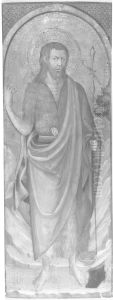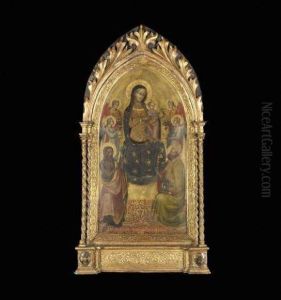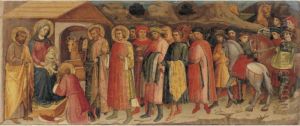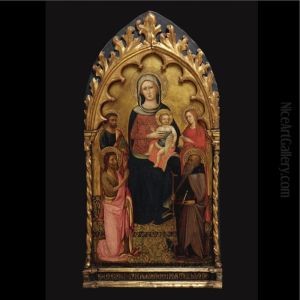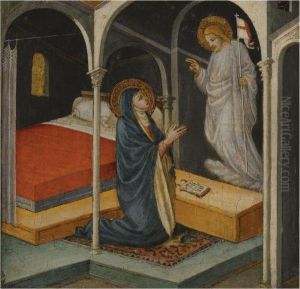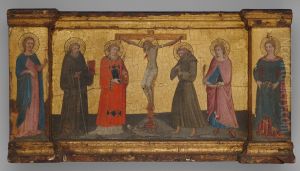Lippo D'Andrea Paintings
Lippo d'Andrea di Lippo, known as Lippo D'Andrea, was an Italian painter active during the late Gothic period, primarily in Florence. His exact birth and death dates are not well-documented, but it is estimated that he was born around 1370 and died around 1451. Lippo D'Andrea was part of the artistic movement that predated the early Renaissance and was a contemporary of other notable artists such as Lorenzo Monaco and Ghiberti.
In his early career, Lippo D'Andrea was influenced by the International Gothic style, characterized by graceful lines, vivid colors, and elaborate ornamentation. He was also influenced by the works of Taddeo Gaddi and Agnolo Gaddi, who were prominent painters of the time. Lippo's paintings are known for their delicate attention to detail, the fluidity of their lines, and their vibrant use of color, which was typical of the Gothic style.
Despite being overshadowed by the towering figures of the Renaissance that followed, such as Masaccio, Donatello, and Brunelleschi, Lippo D'Andrea's work provides an important insight into the artistic transition from medieval to Renaissance styles. His contributions are evident in the frescoes and panel paintings he left behind. One of his most notable works is the 'Madonna of Humility' (c. 1420), which showcases his refined approach to the representation of the sacred figures.
Lippo D'Andrea's career spanned over several decades, and he ran a successful workshop in Florence. The lack of extensive documentation about his life makes it challenging to construct a comprehensive biography, but records show that he was a respected member of the Florentine art community. He was also a teacher, and his workshop helped train the next generation of painters, including his son Andrea di Lippo, who continued his father's artistic legacy.
Unfortunately, Lippo D'Andrea did not enjoy the same level of posthumous fame as many of his peers, which has led to a relative scarcity of scholarly attention. However, his existing works continue to be appreciated for their contribution to the development of Florentine art and for their representation of the aesthetic values of the time in which he lived.
